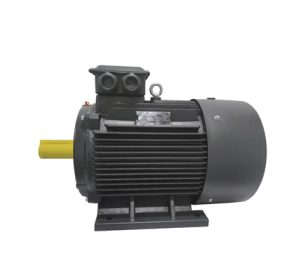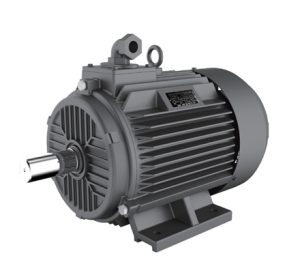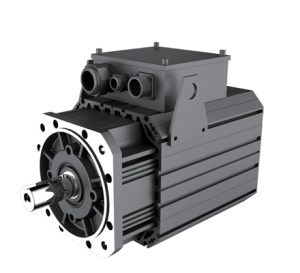
A motor is a device that converts mechanical energy into electrical energy and vice versa. An electric motor is a motor that converts electrical energy into mechanical energy. These motors can run using either AC electrical energy or DC electrical energy. Therefore, there are two main types of motors: alternating current (AC) motors and direct current (DC) motors.
A DC motor is a type of electric motor that uses direct current to power the motor. It consists of a stator and a rotor. The stator usually consists of a magnetic field generator and a stator coil, while the rotor consists of a conductor through which current flows. When a DC current flows through the stator coil, it generates a magnetic field which interacts with the magnetic field in the rotor to produce rotational force in the rotor. Unlike AC motors, DC motors are not designed to be reversible. They are designed to produce rotational or back and forth motion. DC motors come in a variety of shapes and sizes. DC motors are used in a wide range of applications, including robotics, drones, and automobiles. DC motors are commonly used to power the wheels of electric vehicles such as scooters, boats, skateboards, and electric bicycles. DC motors are also used in industrial applications such as food processing, machine tools and material handling.
AC motors are powered by single-phase or three-phase AC electricity. An electromagnetic field in the stator reacts with the rotor, causing the motor to rotate at a synchronised speed to match the frequency of the AC current. AC motors are efficient, durable, quiet and flexible, making them a viable solution for many power generation needs. AC motors are used in a variety of applications including food service, pumps, water heaters, lawn and garden equipment and more. AC motors include types such as induction, synchronous and permanent magnet synchronous motors. These motors use a varying electromagnetic field from an AC power source to generate rotational force.
Induction motors (asynchronous motors): Induction motors are one of the most common types of AC motors. It includes single phase induction motor and three phase induction motor. In an induction motor, there is no conductor directly connected to the power source on the rotor, but the rotational force is generated by electromagnetic induction. This rotor is usually a coil of conductors made of aluminium, copper or copper alloy.
Synchronous motors: Synchronous motors have a rotor that rotates at a speed synchronised with the frequency of the AC power supply. Their rotors contain windings that generate a magnetic field through brushes or electronic controllers connected directly to the AC power source. Synchronous motors are typically used in applications that require high-precision speed control, such as wind turbines and industrial machinery.
Permanent Magnet Synchronous Motors: Permanent magnet synchronous motors use permanent magnets fixed to the rotor to generate a magnetic field. These motors typically have high efficiency and dynamic response, and are often used in applications requiring high efficiency and performance, such as electric vehicles, wind turbines, industrial drives, etc.

Advantages of DC motors
DC motors can often be manufactured relatively small and lightweight, which makes them ideal for use in miniaturised design applications. They offer a number of advantages over other types of motors, the speed of a DC motor can be simply controlled by adjusting the direction of the voltage or current, which is very intuitive to control and allows for easy variable speed and reverse running. DC motors have a higher starting torque. This makes DC motors very effective in starting applications where higher torque is required, as well as being able to respond quickly to changes in control signals to achieve performance where rapid acceleration or deceleration is required, which also provides higher efficiency.
Advantages of AC motors
AC motors are typically less costly than DC motors of equivalent power. This is mainly due to the lower manufacturing and maintenance costs of AC motors. AC motors usually have higher reliability and durability. They are more stable in operation and less susceptible to external factors, which is why they are widely used in many industrial applications. Applications with high noise requirements, such as in household appliances, AC appliances also come out on top with their lower operating noise.
How to choose between AC and DC
The case for choosing AC power:
Cost and availability: AC may be a better choice if you need lower cost and a wider range of power options, especially in domestic and general industrial applications.
Simple control requirements: For simple applications such as domestic appliances or general industrial machinery where complex controls are not required, AC motors may be a more suitable choice. They can be controlled by simple inverters or switches.
High Power Requirements: In applications where high power output is required, such as industrial production lines or large machinery, AC motors are often the more common choice because they can provide high power output at a low cost.
Continuous operation and durability: AC motors typically have a high level of reliability and durability, so in applications that require long periods of continuous operation, such as industrial production lines, AC motors may be a more appropriate choice.
The case for choosing a DC motor:
Precision control needs: For applications that require precise control of speed, acceleration, and position, such as robotics, CNC machine tools, or precision instruments, DC motors may be a better choice because they offer more flexible control.
High starting torque: If your application requires high torque at start-up, such as starting heavy equipment or applications that require frequent starts and stops, DC motors are often a better fit than AC motors.
Miniaturised design: DC motors can often be built smaller, so they may be a better choice for applications where space is limited, such as electric vehicles, aerospace equipment or portable electronics.
Reversibility and Fast Response: DC motors have better reversibility, the ability to change direction easily, and fast dynamic response characteristics, so DC motors may be a more suitable choice for applications that require frequent changes in direction of motion or a fast response to control signals.
In summary, the choice of AC or DC depends on your application needs, including control requirements, power requirements, continuous running time, space constraints and other factors. We can’t live without motors as an important device, any time, we need to choose according to our needs, ZONCN has been providing motor products at wholesale prices, any questions welcome to contact us directly.

